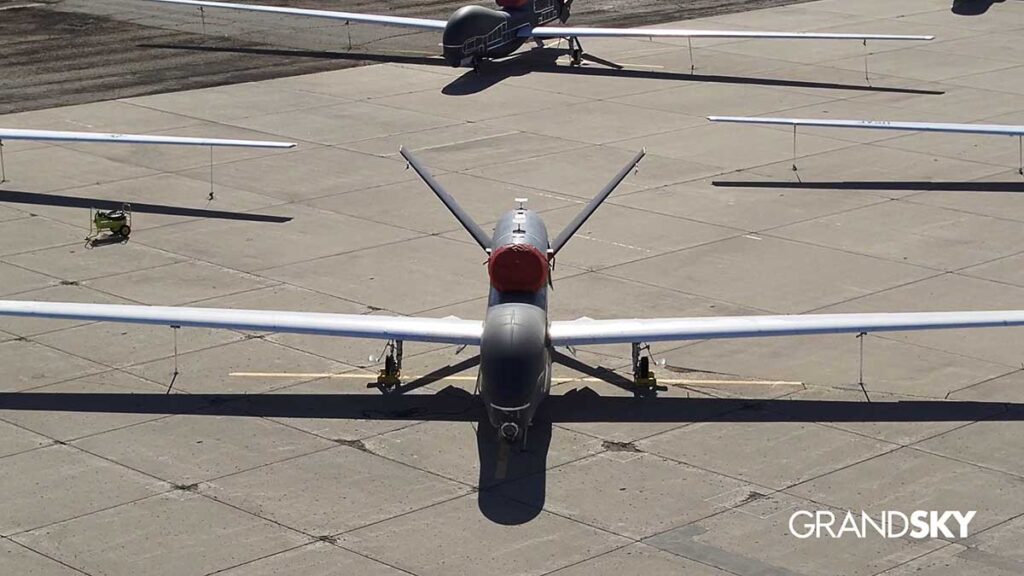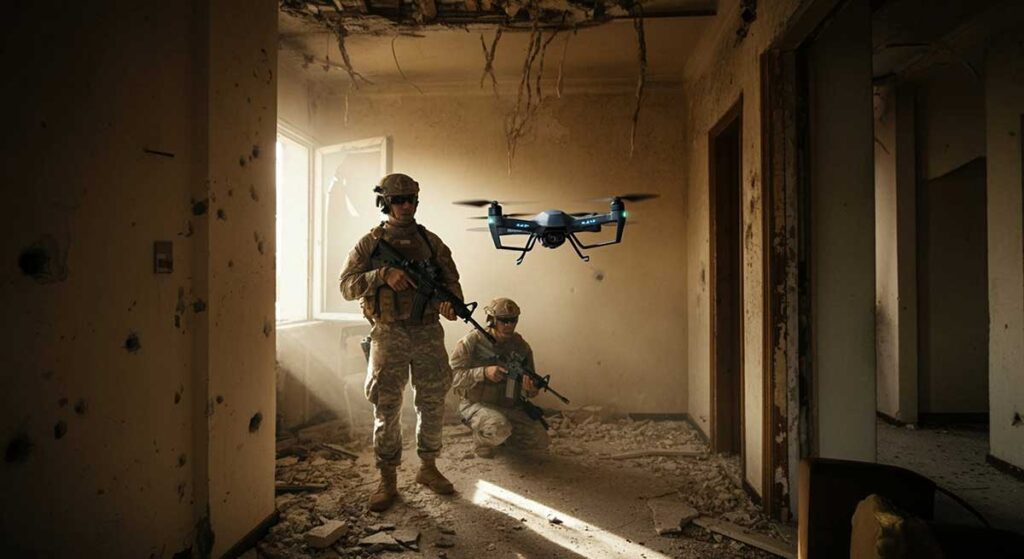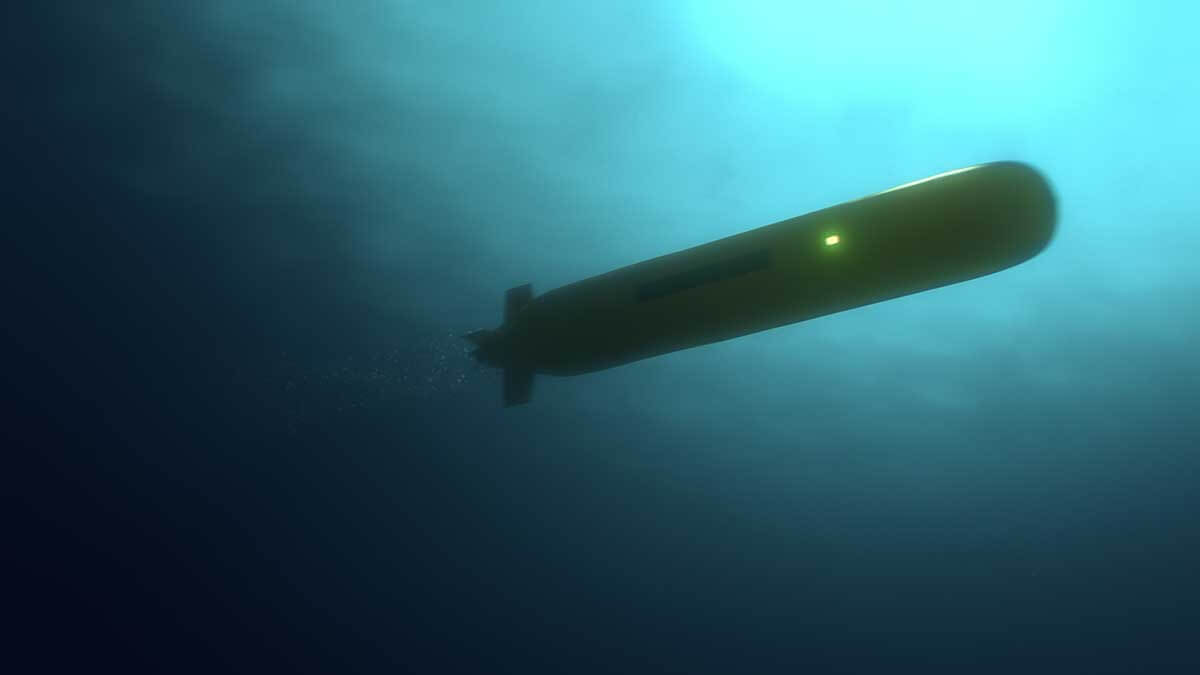The United States Armed Forces remain at the forefront of uncrewed aerial vehicle (UAV) utilization. From the U.S. Air Force’s (USAF) high-altitude intelligence gathering, to the Navy’s maritime surveillance drones and the Army’s tactical UAVs, each branch continues to push the boundaries of what’s possible in unmanned warfare. This article, based on multiple presentations at the UAV Technology USA 2025 Conference, explores some of the strategies, current uses, future research and development (R&D) efforts and common concerns relating to the deployment of uncrewed systems (UxS) across the U.S. military.
Air Force Aims High: HALE ISR Advancements
According to Mr Anthony Susainathan, Chief Engineer, High Altitude ISR Division for the USAF, the service has made significant strides in high altitude intelligence, surveillance and reconnaissance (ISR) capabilities, particularly with its Global Hawk program. These High-Altitude, Long-Endurance (HALE) drones operate at altitudes above 60,000 feet for extended durations and provide critical strategic intelligence gathering capabilities.
The Global Hawk program continues to evolve in terms of sustainment, modernization and capability enhancements. Recent upgrades to the Global Hawk fleet include enhanced close brake performance, light icing operation capabilities and improved navigation systems. These advancements allow for greater operational flexibility and mission effectiveness in various environmental conditions.
Looking to the future, the Air Force continues to explore several opportunities to further enhance the Global Hawk’s capabilities. These include:
- Consolidated lift upgrades
- Beyond line of sight satellite communications
- Gas and go refueling capabilities
- Maritime moving target indicator (MMTI) integration
- Long-term communications architecture upgrades
The program office is also focusing on cybersecurity enhancements and investigating open mission system architectures to improve interoperability and future-proof the platform.

Navy and Marine Corps UAVs: The Tip of the Spear
The Navy and Marine Corps keep making significant strides in integrating unmanned systems (UxS) into their operations. Captain Dennis Monagle, Program Manager Multi-Mission Tactical Unmanned Aerial Systems UAS, Air Systems Command for the US Navy, a subject matter expert on UAVs for the U.S. Fourth Fleet, provided insights into the Navy’s current efforts. He emphasized the importance of the Hybrid Fleet Campaign, to combine manned and unmanned capabilities, which began in 2014 when Southern Command and Fourth Fleet were designated as a theater for innovation in UxS.
The Fourth Fleet has been leading the charge in operationalizing UxS systems, transitioning from short-term evaluations to multi-month and even year-long deployments. This approach allows for real-world testing and integration of UxS’ into naval operations.
One of the most notable initiatives is Operation Southern Spear, which integrates multiple UxS’ in both the Caribbean and Eastern Pacific regions. This operation combines unmanned surface vessels (USVs), unmanned aerial vehicles (UAVs), and manned assets to enhance maritime domain awareness and counter illicit trafficking activities. According to Monocle this two and a half month deployment will be a test to “see if it’s (UxS) a return on investment.”
The Marine Corps is also making strides in UAV adoption, particularly with the MQ-9A Reaper program. The Marines are focusing on developing payloads and capabilities specific to their needs, including ISR, communications relay and electronic warfare (EW) systems.
US Army: Integration Not “Drone Corps”
As conflicts like those in Ukraine and the Middle East demonstrate the critical role of drones, the Army is adapting its drone and counter-drone strategies, expanding uses and intensifying R&D efforts to maintain a technological edge.
The Army currently employs a range of UAVs across different echelons, from squad-level micro-drones to larger, more capable systems at the division level. These platforms serve various purposes, including reconnaissance, surveillance, target acquisition and increasingly, combat roles.
Lieutenant Colonel (USA ret) Glenn Rizzi, Deputy Director of the U.S. Army’s Aviation Capabilities and Integration Directorate, with extensive experience in UAV programs, outlined how the Army’s future UAV strategy focuses on several key areas:
- Proliferation across all formations
- Multi-purpose platforms
- Rapid iteration and fielding
- Enhanced autonomy and manned-unmanned teaming
Importantly, rather than creating a separate “drone corps,” the Army plans to integrate UAVs into all its formations. This approach aims to make unmanned systems an organic capability for units at every level, from infantry squads to armored divisions.
The concept of multi-purpose platforms is gaining traction. Instead of developing specialized drones for each task, the Army is looking at versatile systems that can perform multiple missions. For example, a single drone design might be used for reconnaissance, obstacle assessment and medical supply delivery, depending on the payload and software configuration.
Rapid iteration and fielding are also becoming crucial in keeping pace with technological advancements and evolving threats. The Army is adopting more agile acquisition processes, including the use of OTA agreements and middle-tier acquisition pathways, to speed up the development and deployment of new UAV capabilities.
The Army is exploring expanded roles for UAVs beyond traditional intelligence, surveillance, and reconnaissance (ISR) missions. Some emerging applications, reflective of the Army’s vision of UAVs as multi-domain assets that can support operations across the full spectrum of conflict, include:
- Airborne network extension for enhanced communications
- Electronic warfare and signals intelligence
- Precision resupply and logistics support
- Manned-unmanned teaming with helicopters and ground vehicles
- Loitering munitions and other offensive capabilities
To support these ambitious UAV plans, the Army is investing heavily in R&D. Key focus areas include:
Power and Propulsion
Improving battery technology and developing hybrid power systems are top priorities. The Army is working on solutions that balance endurance, power output, and operational flexibility, particularly for larger UAV platforms.
Autonomy and Artificial Intelligence
Enhancing autonomous capabilities is crucial for reducing operator workload and enabling more complex missions. The Army is investing in AI-driven systems for navigation, obstacle avoidance and decision-making support.
Survivability and Resilience
As counter-UAV technologies evolve, the Army is focusing on making its drones more survivable. This includes developing systems with reduced electromagnetic and acoustic signatures, as well as exploring swarming technologies to overwhelm enemy defenses.
Modular Open Systems Approach (MOSA)
The Army is emphasizing MOSA in its UAV development to allow for rapid integration of new technologies and capabilities. This approach aims to create a more flexible and upgradeable drone fleet.

Special Operations Forces: Seeks Small But Mighty UAV
All the services’ Special Operations Forces actively seek advanced UAV capabilities to support their unique mission requirements.
The Air Force Special Operations Command (AFSOC) has specific interest in smaller, more agile UAV platforms that can be easily deployed and operated in austere environments.
Similarly, U.S. Army Special Operations Forces (SOF), at the forefront of UAV adoption and innovation, are also particularly interested in small, man-portable UAVs that can provide immediate tactical intelligence and support in austere environments. They are also exploring novel concepts like drone-based electronic warfare (EW) and long-endurance ISR platforms for sensitive missions.
Mr Benjamin Tran, Chief, USAF ISR-SOF Capabilities Development Office CDO, emphasized the need for UAV systems that can be operated by uniformed military personnel without relying on contractor support in forward-deployed locations. This shift is crucial for future conflicts where civilian contractors may not be able to accompany forces into hostile areas.
Tran stated, “We have to figure out how we build these drone systems so that our uniformed military can go downrange with them by themselves, without any contractor representatives to help them deploy the systems, fix the systems, upgrade the systems and change the software in the systems.”
Different Missions, One Direction: Onward!
As all the military services continue to expand their respective UAV capabilities, several challenges and areas for future development uniformly impact all of them:
Airspace Integration: Developing procedures and technologies to safely integrate and manage UAVs into national and international airspace remains a priority, especially in congested battlespaces. The military is working on “due regard” procedures and collecting data to demonstrate the low risk of collision in certain operating environments.
Autonomous Capabilities: Enhancing autonomous target recognition (ATR) and other AI-driven functionalities is a major focus area. The military recognizes the need for more robust and adaptable autonomous systems to handle complex operational scenarios. An issue related to these capabilities are the ethical considerations that their employment may trigger.
Communications and Data Dissemination: Improving the ability to transmit and share data collected by UAVs in real-time is crucial. This includes developing more resilient and high-bandwidth communication systems and exploring the use of commercial satellite networks.
Modular and Open Architectures: There is a push towards more modular UAV designs that allow for rapid payload swapping and easier upgrades. Open mission system architectures are being explored to enhance interoperability and reduce vendor lock-in.
Industrial Base and Supply Chain: Addressing dependencies on foreign-made components, particularly those from China, is a growing concern. The military is actively seeking to diversify its supply chain and promote domestic production of critical UAV components.
Cybersecurity: As UAVs become more network-centric, ensuring robust cybersecurity measures is paramount. This includes protecting both the platforms themselves and the data they collect and transmit.
Rapid Acquisition and Fielding: The military is working to streamline its acquisition processes to more quickly field new UAV capabilities. This includes leveraging digital engineering tools, agile development methodologies, and innovative contracting mechanisms like Other Transaction Authorities (OTAs).
Training and Readiness: Training the platoons, fleets and squadrons to use, or work alongside, machines on the battlefield remains a significant consideration that all services face in preparation for widespread deployment of UxS.
Off We Go!
The U.S. militaries are all peddling fast to keep up with UxS technologies and how they will impact future conflicts.
- The Air Force continues to hone the capabilities of its HALE drones to give everyone the eyes in the sky they need for situational awareness.
- The Navy and Marine Corps’ sharp focus on creating a hybrid fleet that seamlessly integrates manned and unmanned assets, coupled with advancements in autonomous technologies and data processing aims to revolutionize military operations.
- The Army has embraced a strategy of widespread UxS integration, multi-purpose platforms and rapid innovation to harness their full potential across all echelons and missions to maintain a decisive edge in future conflicts.
- All SOF forces seek small, agile drones to provide them tactical flexibility untethered to rear-eschelon contractors.
From high-altitude ISR platforms to tactical unmanned systems for special operations and USVs for our seafaring warriors, across the board, the services continue investing heavily in UxS capabilities today…in preparation for the fight of tomorrow.

